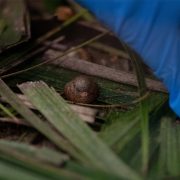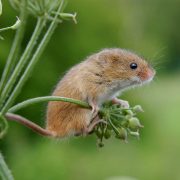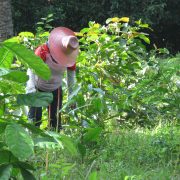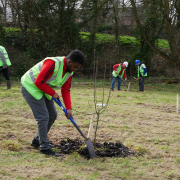COP15 is the largest biodiversity conference in a decade, but what is it and why should we care?
WHAT IS COP15?
Hosted in Montreal, Canada, on 7-19 December, COP15 is the 15th meeting of parties at the Convention on Biological Diversity (CBD). CBD is an international treaty that was first agreed on and signed by 196 nations in 1992.
The biodiversity COP is the third of three important ‘Conference of the Parties’ (COP) meetings held this autumn which together will shape the future of wildlife and the environment on our planet. Hosted by the United Nations, these COP meetings bring together representatives from almost every nation state to discuss solutions to the global environmental challenges we all face.
You may have heard of the COP27 which was held in Egypt in November to discuss how to tackle climate change. This was closely followed by the less reported but no less important COP19 which updated the Convention on International Trade in Endangered Species (CITES) and succeeded in strengthening protection for a number of species, including two Asian songbirds that we have been working to protect at Chester Zoo.
Now COP15 for biodiversity will shape the future direction for nature through agreement of a new treaty, the Global Biodiversity Framework (GBF).
WHAT HAPPENS AT COP15?
Biodiversity is at a tipping point and the outcomes of COP15 are crucial to conserve the natural world. Governments from around the world will agree on a new set of goals that are critical to halt biodiversity loss and restore our relationship with nature.
Living in harmony with nature by 2050 is the overall vision of the CBD. To slowly progress towards this goal, the main outcome of COP15 should be the adoption of a Global Biodiversity Framework.
The CBD states its aims to be; “By 2050, biodiversity is valued, conserved, restored and wisely used, maintaining ecosystem services, sustaining a healthy planet and delivering benefits essential for all people.”
THE IMPORTANCE OF BIODIVERSITY
Biodiversity is the rich variety of life on earth, from microscopic microorganisms to a wide range of animals, plants and fungi. It is critical for our own survival as we depend on biodiversity to have healthy and resilient ecosystems. These ecosystems provided us with the food we eat, the air we breathe, the freshwater we drink and the medicines we rely on. The more biodiverse an ecosystem is, the better it is for human health and wellbeing. A loss in biodiversity weakens the ecosystems that we rely on and reduces the availability to provide these services.
“The crisis that we are in requires real transformative change from everyone”
Dr Simon Dowell, Director of Science
Spreading awareness about the importance of biodiversity and communicating solutions for its prevention are key to creating change and achieving the targets outlined in the Global Biodiversity Framework.
WHAT ARE THE CHESTER ZOO TEAM DOING AT COP15?
Representing Chester Zoo in Montreal will be Dr Simon Dowell, Director of Conservation Science, and Charlotte Smith, Director of Conservation Education.
By attending this event, we are highlighting the critical role zoos play in delivering and achieving the targets outlined in the framework. COP15 will be a brilliant opportunity to connect with other conservation organisations, share knowledge and explore future collaborations.
Simon and Charlotte are attending a fair which hosts conversations focusing on Communication, Education and Public Awareness (CEPA). This will help to evaluate the best ways of communicating the GBF to achieve the targets. We will also be working closely with ‘Rare’, an organization which is looking to drive social change for people and nature.
PROPOSED TARGETS
Our conservation work is supporting 4 of the 21 targets proposed by the Global Biodiversity Framework:
Target 3: Protecting 30% of land and sea areas
One of the targets in the framework is the idea of 30 by 30. This refers to the global goal to protect 30% of land and sea areas for wildlife by 2030.
Biodiversity is at the forefront of our mind when we look at managing areas of our land. Here at Chester Zoo, we are setting ourselves a 30% target to actively manage our land so it’s fit for wildlife.
Examples of how we are doing this can be seen on our Nature Reserve. By aiming to achieve our own 30% target, we are contributing to the 30% target set by the Cheshire Wildlife Trust to protect areas within Chester. This will then contribute to the national and regional goals.
Target 4: Active actions for species to prevent biodiversity loss
Over 50% of species on the IUCN red list require active intervention to restore their populations. These interventions include reintroductions, translocations, control of invasive species to allow native species to flourish and prevention of human-wildlife conflict. Using our skills and expertise, we are able to provide these interventions to a variety of species. Some examples of our work include:
• Reintroduction of Bermuda snails
• Reintroduction of golden skiffia
Chester Zoo has been actively working on human-wildlife conflict around the world for over a decade. Together with partner organizations we have been involved in a number of projects and you can explore some here:
• The Assam Haathi Project
• The Terai Tiger Project
• Conserving Brazilian Giants
Target 12: Providing crucial green and blue spaces
Zoos are really important green and blue spaces. At Chester Zoo, we aim to provide accessible areas where everyone can become immersed in nature. These areas range from small patches of wildflowers that are havens for insects and essential food for bees and butterflies, to larger designated areas like our nature reserve that is open to anyone keen to see some native biodiversity.
We’re also involved in the Nature Recovery Corridor, which stretches from Chester to Ellesmere Port, providing green and blue spaces for people to explore whilst increasing biodiversity through the creation of habitats.
These areas are key to connect people with nature and provide the opportunity to see a breadth of biodiversity within various plant and animal species.
Target 16: Empowering people to live sustainably
We’ve set an ambitious target in our Conservation Masterplan to empower 10 million people to live sustainably through our wide range of education and engagement interventions.
One example of how we are empowering people is through our Sustainable Palm Oil project that is in collaboration with other zoos. Following our work with local businesses, restaurants and community advocates, our hometown of Chester officially became the world’s first Sustainable Palm Oil City in 2019.
CONSERVATION MASTERPLAN
Our planet and its biodiversity is facing is toughest challenge yet! Our Conservation Masterplan aims to build on successes and sets out a road map for the delivery of our mission to prevent extinction. But this cannot be done alone, collaboration is key!
Our Conservation Masterplan targets will play an important role in delivering the targets of the Global Biodiversity Framework and protecting the future of biodiversity on the planet.



